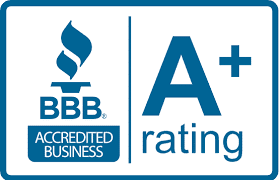
Siding isn’t something you think about until it starts falling apart. Once the cracks show or the color fades, it quickly becomes more than curb appeal — protecting your home and keeping your energy bills in check. But the moment you start asking for quotes, the numbers can feel all over the place. Some are shockingly low, others too high, and none match. That’s when you realize there’s more behind a siding replacement estimate than meets the eye.
What Drives Your Siding Replacement Estimate
There’s more behind that number on your estimate than just materials and labor. Every choice, from your contractor to your siding style, has a price. Knowing what’s driving the cost helps you plan smarter and avoid unexpected bumps.
Type of Siding Material
Choosing the right siding isn’t just about looks. The material type has the most significant impact on your replacement estimate. The market offers vinyl, fiber cement, engineered wood, and metal options. Each has its price tag based on the cost to manufacture and install. Some provide long-term savings, while others are less expensive upfront.
Vinyl, Wood, Fiber Cement, and More
Vinyl siding is the most budget-friendly and widely used. It’s lightweight, easy to install, and available in many colors. Wood siding costs more and needs regular upkeep but gives a classic look. Fiber cement is durable and resistant to weather but requires skilled labor, which raises the estimate. Depending on your region and installer, engineered wood or metal options fall between these materials.
Size and Complexity of Your Home
It’s not just about square footage. A simple box-shaped home costs less to re-side than a multi-story with angles, trims, and dormers. Larger homes use more materials and take longer to complete. Labor increases with every cut, corner, and ladder climb. Estimators measure not just width and height but the complexity of your exterior layout.
Larger Surface Areas Increase Costs
More siding equals more money spent. A bigger home needs more panels, nails, insulation, and prep time. Installers spend longer on-site, especially if there’s a second story. Safety gear and scaffolding may be required. These factors raise your siding replacement estimate even before materials are considered.
Architectural Details and Custom Features
Bays, balconies, arched windows, and overhangs don’t come cheap. These elements require precision cutting and careful installation. Some areas might need flashing or extra sealing to protect from water damage. Custom trim or decorative elements increase both time and material use. Contractors factor all of this into their pricing before handing you the quote.
Labor Costs Influenced by Your Region and Season
Where you live and when you hire both affect cost. Some areas have higher labor rates, stricter codes, or limited contractor availability. Siding in cold or storm-prone regions also involves added installation steps. In addition, prices can spike depending on the season due to demand or weather constraints.
Regional Price Variations
Labor costs vary widely across the U.S. Urban areas often have higher labor rates than rural towns. Some states require licensed crews, which limits availability and drives prices up. Weather-related challenges, like installing during rainy or snowy months, also slow work and add cost. Local economic factors play into material delivery fees and supply availability.
Time of Year Affects Pricing
Spring and summer are the busiest seasons for exterior work. Due to high demand, contractors may charge more during peak season. Scheduling during off-peak months, like winter or late fall, might save you money. However, snow, ice, and storms can delay completion and cause material issues. Availability and weather are both factors in your final siding replacement estimate.
Old Siding Removal and Prep Work
It’s easy to forget about what’s underneath the siding. But before the new goes up, the old must come down. That means disposal, possible repairs, and inspection of the wall beneath. Prep work is labor-intensive and often uncovers hidden issues. All of that gets rolled into the estimate you receive.
Siding Tear-Off and Disposal
If your home has old siding, it usually needs to be removed. That adds labor hours and disposal fees. Landfills charge per ton, and the siding isn’t light. Suppose your home has two or more siding layers; that cost increases. Hazardous materials like asbestos siding require special handling and drive prices up sharply.
Repairs to Sheathing or Structural Damage
Contractors can’t always see damage until the old siding is gone. Rotted wood, mold, or pest infestations must be fixed first. These hidden issues delay work and increase material costs. Your quote may not include these siding repairs upfront. Many estimates include a line for “contingency” work after the tear-off.
Permit Fees and Code Compliance
Replacing siding isn’t just a visual upgrade—it’s regulated. Most municipalities require permits for exterior work, and local building codes often dictate materials or insulation standards. All of this affects the time, materials, and final cost. Contractors include these items in your siding replacement estimate to avoid surprises later.
Local Building Codes That Drive Decisions
Some areas ban certain siding types due to fire risk or climate. Others require specific insulation ratings or storm resistance. Contractors must follow these rules or risk fines and failed inspections. That could mean using more expensive materials or upgraded installation techniques. These factors influence your overall quote from the start.
Permit Application and Inspection Costs
Permits vary from town to town, both in process and price. Some are flat fees, others scale based on square footage. Projects may require multiple inspections throughout the job. Waiting for inspection approval can delay crews and increase labor costs. The estimate includes these steps, even if they’re not always detailed.
Siding Style, Color, and Finish Options
Prices vary even within one material type—the finish, texture, and color you choose influence material and labor. Standard options are usually mass-produced and cheaper. Custom selections can come with special ordering fees or added wait time. Your design preferences play a more prominent role than you think.
Custom Colors and Premium Styles Add Up
Standard siding colors are cheaper because they’re produced in bulk. Custom shades or bold colors fade faster and need extra coatings. Some textured or patterned styles need more careful handling during installation. You might pay more for visual appeal that adds no structural value. These upgrades push your siding replacement estimate higher.
Added Features Like Insulated Siding
Insulated siding adds energy savings but costs more upfront. It’s thicker and takes longer to install, raising labor fees. Not every contractor offers it, so choices are limited. It may reduce your utility bills, but the break-even point takes years. If you’re going this route, expect a higher quote than basic vinyl.
Contractor Experience and Warranty Coverage
Choosing a contractor isn’t just about price. Experience, licensing, and warranty options shape your final estimate. A lower bid might skip key details or cover less work. A good contractor may charge more but deliver better results. Think beyond the bottom line when comparing quotes.
Quality Labor Comes With a Price
Top-tier contractors don’t work for bargain rates. They use skilled crews who work faster and make fewer mistakes. Lower bids often mean cutting corners or using cheaper materials. One poor install can cause later water damage, mold, or pest issues. Paying more upfront can save you money in the long term.
Warranty Length and Coverage
Warranties vary in length and scope. Some cover just the product, while others include labor. A longer, more complete warranty usually reflects better materials and quality. It also means higher upfront costs to cover the added risk. But peace of mind is worth something, which shows up in your estimate.
Financing, Rebates, and Additional Services
Your quote might include more than siding. Some contractors offer financing or bundles for other exterior work. Rebates can apply to particular products but don’t always reduce the upfront estimate. These extras change the cost, and it’s essential to understand how.
Financing Can Change Your Cost Over Time
Many siding companies offer financing plans. Some promote 0% interest quickly, but rates increase later. Bank loans or third-party lenders may have origination fees or interest. Financing helps you start the project sooner but increases the total amount paid. Your estimate may include setup or processing fees, too.
Energy Rebates and Value-Add Services
Energy-efficient siding may qualify for federal or state rebates. These aren’t deducted from your quote and must be claimed later. Some contractors include a gutter replacement, painting, or window wrapping. These services add value but also raise the base estimate. Ask for line-item details to see what’s included.
Getting an Accurate Siding Replacement Estimate
Every home is different, and every estimate should reflect that. A clear scope of work helps avoid confusion and hidden charges. Contractors give better estimates when they understand your expectations. Communication is key to getting a quote that matches your needs and budget.
Honest Communication Helps Avoid Surprises
Provide clear photos, home details, and material preferences early on. Invite contractors for an on-site visit to measure and inspect. Ask questions about the inclusions and what might change later. Make sure you understand how they handle unexpected issues. A detailed and honest conversation helps you get a fair estimate.
Why Your Siding Replacement Estimate Might Seem Higher
Sticker shock is standard in siding projects. That’s because people often think it’s just the price of the panels. But the estimate includes labor, prep, disposal, and, usually, warranties. Once you break it down, the number makes more sense. Understanding the whole picture puts you back in control.
It’s More Than Just New Panels on the Wall
A siding estimate is like a layered cake. It includes removal, prep, repairs, materials, and cleanup. Labor hours, tools, travel time, and permitting are all baked in. You’re not just paying for siding but for a full service. Once you realize that, the pricing feels more reasonable.
Start Smart With Your Siding Replacement Estimate
A reasonable estimate doesn’t just give you a number — it gives you clarity. It tells you where your money’s going, what’s being done, and how your choices shape the outcome. Don’t wait until damage spreads or prices rise even higher. Start asking questions, reviewing details, and pushing for transparency. The sooner you take the first step, the closer you are to a protected home worth what you’ve invested.
From roofing to siding, we break it down clearly. Visit the Faircloth Roofing, Inc. blog for more smart advice that helps.






